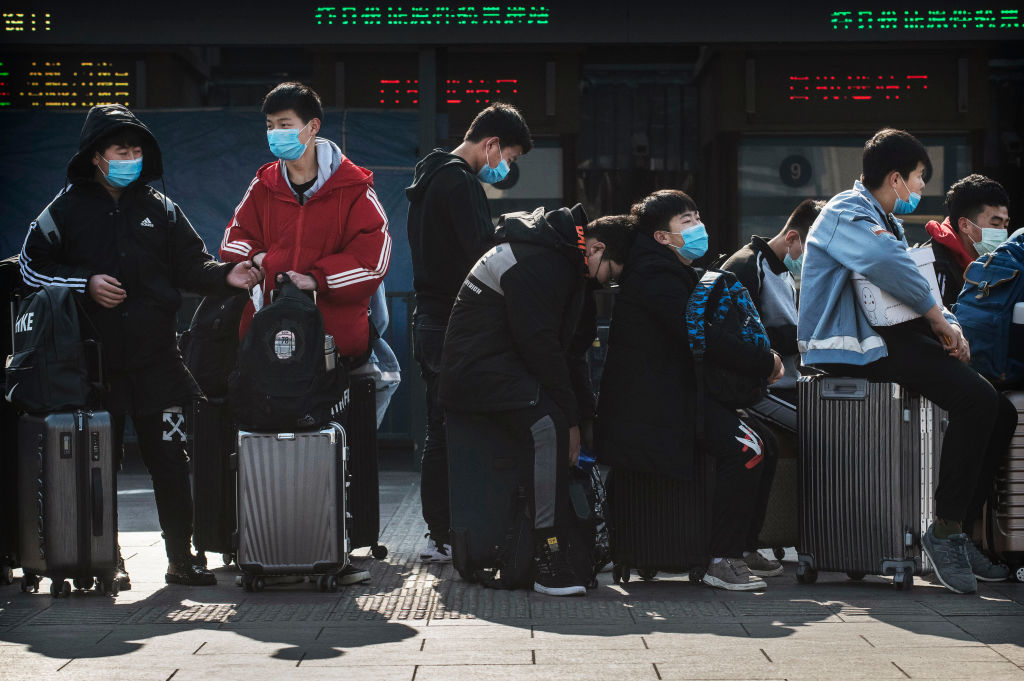US health system could face strain if coronavirus spreads here
Challenges include health care workforce and medical supply shortages

The coronavirus outbreak spreading in China could expose vulnerabilities in the U.S. health care system if transmission became widespread here, experts warn.
Among the challenges the U.S. could face in a coronavirus outbreak are health care workforce and medical supply shortages, a lack of hospital beds if the disease symptoms prove severe, and a financial strain on health departments that have seen waning support from the federal government over the years.
[U.S. ready for potential coronavirus outbreak, CDC assures lawmakers]
Experts also warn against short-term measures such as travel restrictions, arguing that these sow an atmosphere of mistrust that can lead to sick people hiding their illnesses and potentially making the outbreak worse.
For now, the U.S. has been spared from the worst of the outbreak. The vast majority of cases are in China, where the government placed travel restrictions on millions of its citizens as the number of sickened people continues to grow. There were over 7,700 cases and 170 deaths as of Thursday, according to China’s National Health Commission.
Confirmation of the first locally transmitted case on Thursday added to the concern about a U.S. outbreak, but federal health officials maintain that the risk to the general public is low.
Push for preparedness
For health officials on the front lines of preparing for local transmission, the situation bolsters their arguments for sustained preparedness funding.
Nirav Shah, director of the Maine Center for Disease Control and Prevention, said he and officials in other states have been able to plan a response to coronavirus cases.
“But doing so requires resources, and this is a good example of why ensuring sustainable funding for state and federal public health really should be a priority, not just now but going forward,” said Shah, who is also the chairman of the Association of State and Territorial Health Officials infectious disease policy committee.
The Trust for America’s Health, an advocacy group that promotes illness prevention, tracks the amount of government funding available for health preparedness. The group’s most recent report from last year demonstrates that state health departments typically have fairly stagnant budgets with diminishing federal support.
Federal funds for state and local health preparedness fell from $940 million in fiscal 2002 to $675 million in 2019 and hospital emergency preparedness funds were cut from $515 million in 2004 to $265 million in fiscal 2019, according to the group’s 2019 report.
[Lawmakers fret over China’s virus info as US local case emerges]
A group of other researchers including Bipartisan Policy Center experts argue there is a $4.5 billion annual gap between the amount of funding public health departments receive and what they need to have the capacity to respond to emergencies.
Dara Lieberman, the Trust’s director of government relations, calls this the country’s biggest health care vulnerability as states struggle to maintain their normal functions before an outbreak.
“Health care and emergency care is already at capacity in a lot of areas, so any strain on the system could be catastrophic, depending on what kind of outbreak we’re facing,” she said. “Imagine if you’re in an area where there has been a hospital closure lately. That’s a scary scenario.”
If an outbreak spreads between individuals in the U.S., hospitals and health care providers could expect a surge in people seeking emergency or primary care.
“Hospitals should be dusting off their pandemic plans,” said Eric Toner, a Johns Hopkins Center for Health Security senior scholar. “We don’t yet know whether this will become a pandemic, but it takes time to do the education and refresher training that hospital staff are going to need. They don’t implement these plans on a regular basis.”
Those plans include training for the use of protective equipment and other infection control protocols, he said. Toner noted that two areas of concern could be intensive care unit capacity and the availability of medical ventilators if respiratory symptoms of the coronavirus are severe.
Roslyne Schulman, director of policy for the American Hospital Association, said hospitals treat infectious disease patients every day and staff constantly undergo re-training in proper infection control practices in order to be able to respond when new viruses are identified.
Since a possible outbreak could come at the worst of the annual flu season, Shah from Maine said it could add to the strain that hospitals are already experiencing with seasonal flu. The flu, he said, “still presents a greater risk to almost everybody in the United States than the novel coronavirus, at least as of right now.”
Some experts also predict that the health care system may have to learn to deal with coronavirus on an ongoing basis, like the flu.
“There is a real possibility that this could become a sustained spread of disease” if the attempts to control it in China fail, Thomas J. Bollyky, director of the global health program at the Council on Foreign Relations, said on a conference call Wednesday.
That’s why it is so important to develop medical countermeasures like vaccines, he said. While he was optimistic about vaccines being developed by the National Institutes of Health and elsewhere, “most vaccine candidates fail,” he warned.
“People should be realistic both in terms of the timeframe in which a vaccine might emerge and also the likelihood of success,” he said, adding another difficult question that would arise if a vaccine is developed: “Who gets it first?”





